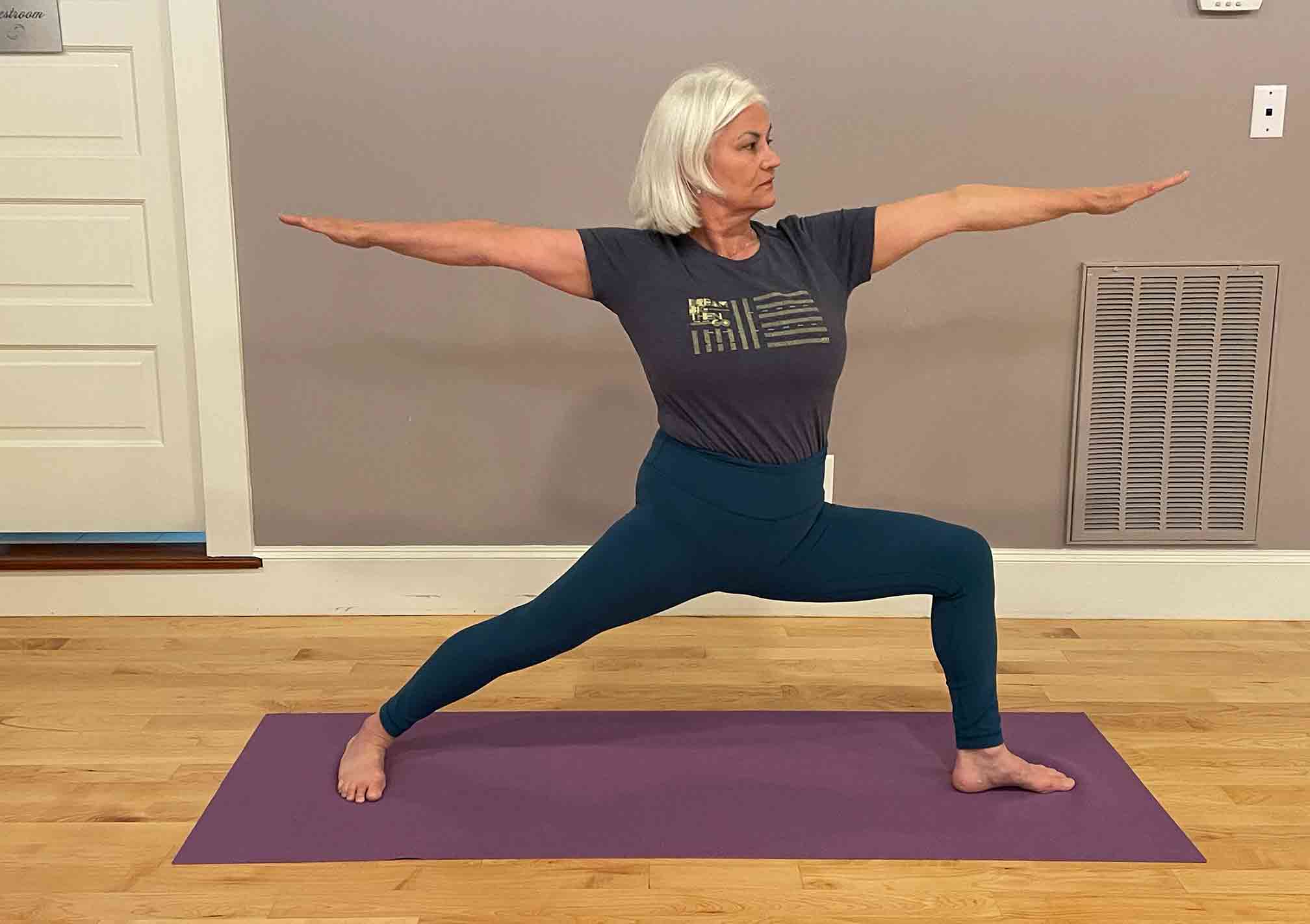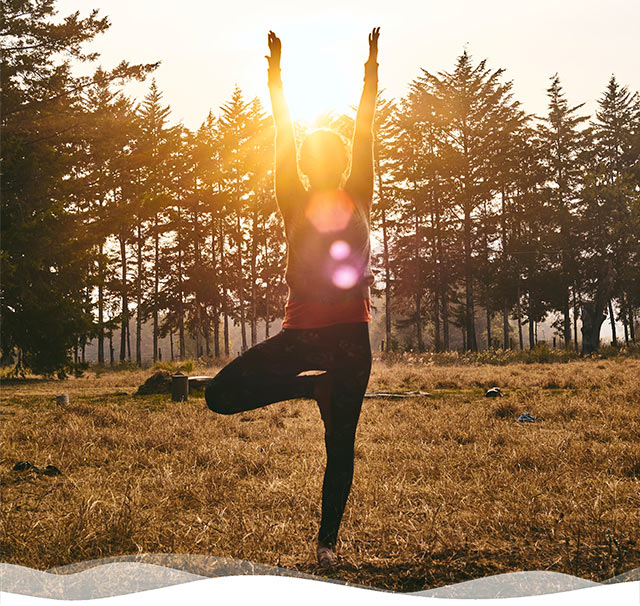Interested in our Post Partum Workshop? See link at bottom of the article for more information about the October 12th class.
After you give birth to a child, your body needs healing and toning to return to a new “normal.” Your body is changed, but it does not mean that you should put up with laxity and postpartum conditions such as pelvic organ prolapse, urinary incontinence, hemorrhoids, hernia, diastasis recti, depression, anxiety, sleeplessness, or hormonal imbalance. Many women mistakenly believe that “hitting the gym” will get them back in shape and fix these issues. Actually, if you aggressively lift weights and do cardio, you are likely to put undue pressure on your internal organs and worsen the problems. Running, for example, has a pounding effect on the body, which can overstretch the ligaments that hold your uterus and bladder in place.
A regular practice of yoga asanas can help you recover your body. A regular routine of postpartum practice yoga can bring your pelvic organs back into place, tone them and aid their proper functioning. It can also relieve and prevent mastitis. But it has to be the right kind of yoga. This is not going to happen in a general flow type class in which you move quickly from one pose to another without understanding how to work on the organic body. With the right kind of yoga, you learn how to do classical postures with adaptations and stay in them for the appropriate time to work on your organic body and increase healthy blood flow to specific regions.
Like many studios of Iyengar Yoga, we at Alcove Yoga offer a class called Women’s Essentials. It is a 75 minute class that focuses on women’s health issues. Instructions are offered for women of all phases of life: childbearing years, postpartum, perimenopause, and menopause. Separate Prenatal Yoga classes are offered for those carrying a child.
In this article, I want to talk about what you should do to build yourself back up after giving birth. But even if you’ve never had a child, this sequence is great. Even men can do this sequence with good effects. As we age, and after menopause we all suffer some kind of prolapse. You’ve seen ads for adult incontinence with aging. You can prevent that problem from happening if you’re a faithful practitioner of yoga in earlier years and know what to practice.
If you’ve had a baby, you can start coming to Women’s class as soon as your healthcare practitioner says it’s fine for you to go back to regular activities. The women’s class offers a sequence of asanas with support so that you can work on your internal organs. There will also be focus on skeletal muscles and joints to maintain balance and external alignment. Taking the support of wall, blocks, chair, bolster, and strap helps you to stabilize the frame of the body so that you can observe and work on the internal organs. It is actually more challenging to use support. Having the boundaries enhanced by props means you get direct feedback on your actions, so there is less room for “cheating” or losing actions.
Here’s a Sequence for Post-Partum Health. Note: this sequence is inspired by the Post-Menstruation practice from Lois Steinberg’s Geeta’s Guide to a Woman’s Practice (highly recommended and available at Loissteinberg.com). It is best to practice this sequence under the guidance of a Certified Iyengar Yoga Teacher (CIYT). This sequence is cooling, and soothing to the nervous system. It is not for beginners and assumes intermediate level experience in Iyengar Yoga.
Props Needed: 1 mat, 2 bolsters, 2 blocks, 1 long strap, 1 short strap, blanket, yoga chair, wall


1. Cross bolsters: a combination of Dwi Pada Viparita Dandasana and Setu Bandha Sarvangasana. In Cross Bolsters, the shoulders are supported on the top bolster and the back crown of the head is down on the floor or blanket.


2. Upavistha Konasana: Sit on the floor with legs wide, torso upright.


3. Baddha Konasana: Sit with back to the wall. Use a strap around your feet to bring the heels closer to the perineum.


4. Tadasana with block in 3 places.
A. Flat block between the feet.


B. Block tall between knees. Then move the top edge of the block in line with the top of your knee caps. Adjust the feet to be the same distance apart as the block. Lift the inner ankles up and cut the outer ankles in. Pay attention to the spaces between the inner legs and the block. If the block tilts to one side you have to adjust the inner legs.


C. Block between inner thighs. Finally, place the block on its medium height between the legs at the perineum. The front of the pelvis should be higher than the back of the pelvis. You can see from the photo on the right that I need to lift the front of my pelvis higher!


5. Adho Mukha Svanasana with feet elevated. Shown at left. Feet are together. If menstruating, turn around and put the blocks flat and shoulder-width apart. Place hands on blocks and do the pose with feet apart.


6. Utkatasana against the wall, shown at right. Make sure there’s no space between your back and the wall, spread arms wide on wall and separate legs hip width. This is great for diastasis recti in particular. Try not to purse your lips!


6. Prasarita Padottanasana I Concave: on the left. Step the feet 4 to 4.5 feet apart and place your hands on your waist. Make sure the outer edges of the feet are parallel, toes turned in. Extend the front spine long and bring the shoulder blades back. Stay in this shape if menstruating, otherwise go to the trunk down position.


Prasarita Padottanasna I, Trunk and Head Down. Shown right. After elongating the front of the spine, bring the trunk down and place the head on the floor. You can use a block for the head of it doesn’t quit touch; or stay in the concave stage and working on stretching the groins.


8. Rope Sirsasana, legs in Upavistha Konasana, then Baddha Konasana. If you don’t have wall or ceiling ropes, you can do regular Sirsasana I or skip this posture.
9. Adho Mukha Svanasana, feet joined and elevated, as in #2 above, or per instructions for menstruation.


10. Uttanasana with feet apart, concave upper spine, standing on two blocks, long belt underneath the blocks and around the lower sacrum. Bend the knees, place the belt on the lower sacrum near tailbone, and tighten. Then straighten the legs completely.


11. Niralamba Sarvangasana using the wall. Have a bolster with a blanket folded in similar long shape as bolster, on top of bolster, but a couple of inches from the wall edge of the bolster. Do not practice this during menstruation. If you have neck and shoulder problems, you may need to skip 8-10 and go to #14 below.


12. Supta Konasana with inner edges of feet at wall, feet and hips at the same height. Great for prolapse! Do not do during menses.


13. Akunchanasana (left) with shins pressing the wall, ankles and dorsal feet stretched on wall, heels at buttock bone height. This posture is also soothing to the nervous system. Not to be done during menstruation.


14.Chair Sarvangasana. It is said that the blood circulates the entire body 3 times per minute. Our Guru, B.K.S. Iyengar taught us build up our practice of inverted postures to 10 minutes for optimal health. Not to be done during menstruation.


15. Adho Mukha Swastikasana with chin on chair seat, reaching arms high on backrest. Rest the tip of the chin on the chair.


16. Urdhva Mukha Paschimottanasana, have your back to the wall, backrest of chair facing you, place heels on backrest and pull chair in toward you. Release the abdomen and pelvic organs down. Your buttocks will not touch the wall. Not to be done during menstruation.


14. Maha Mudra with chair: Stage 1. Sit in Dandasana in front of a chair with the seat facing you. Bend the right leg out to the side with the right thigh in line with the hip. Bring the sole of the foot against your inner right leg, as in the tree pose, Vrksasana. Bring your body weight to the front edge of the buttock bones, and stretch the arms and side torso up, then place your hands on the chair backrest. Look up and bring the dorsal spine in to make the back concave. Stay for several seconds.


Stage 2. Keeping the spine extended, now place your hands or forearms on the seat of the chair. Raise the sides of the torso up and bring the head down to Jalandhara Bandha. If not in mensturation, bahia kumbhaka with Uddiyana Bandha may be practiced 2-3 times on each side.


15. Uttanasana: Feet hip-width, concave, then full posture. Let the sides of the trunk come down, sacrum come forward and down, and release the back. Menstruating women should keep the parallel to the floor.


16. Savasana
Shorter Sequence for limited time: Adho Mukha Svanasana with heels elevated; Uttanasana, Prasarita Padottanasna, Upavistha Konasana, Chatush Padasana, Supta Konasana, Savasana.
Practice this sequence at least twice per week (not during menstruation). It will improve continence, menstruation and sexual functioning. It will reduce anxiety and depression and give an overall sense of well-being. You will know how to practice in your regular classes, and what to avoid.
Sign up for the Post Partum workshop at Alcove Yoga. Saturday, November 14th, from 10:30 am to 12:30 pm. $30.00. This is a virtual, streaming event. Limited access to the workshop video recording is included in the workshop price. https://www.wellnessliving.com/schedule/alcove_yoga?id_class_tab=1&k_class=256211





